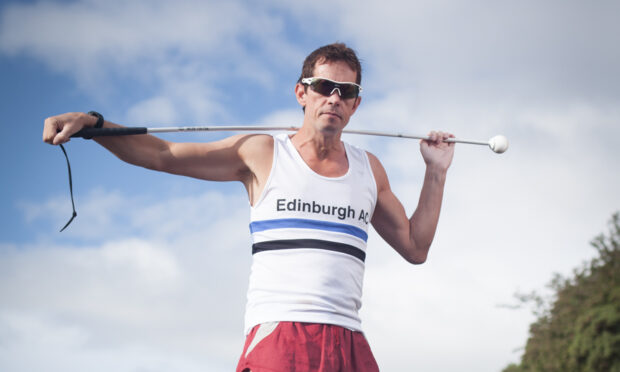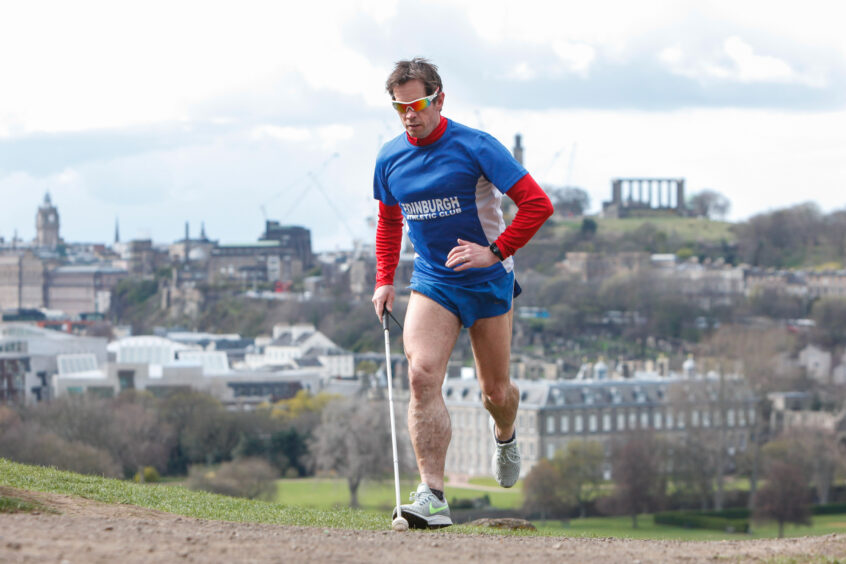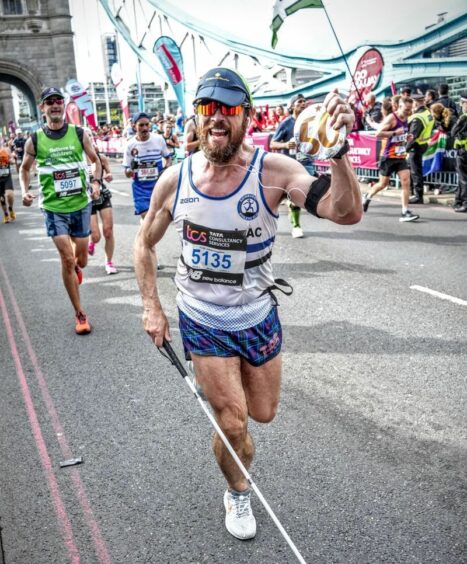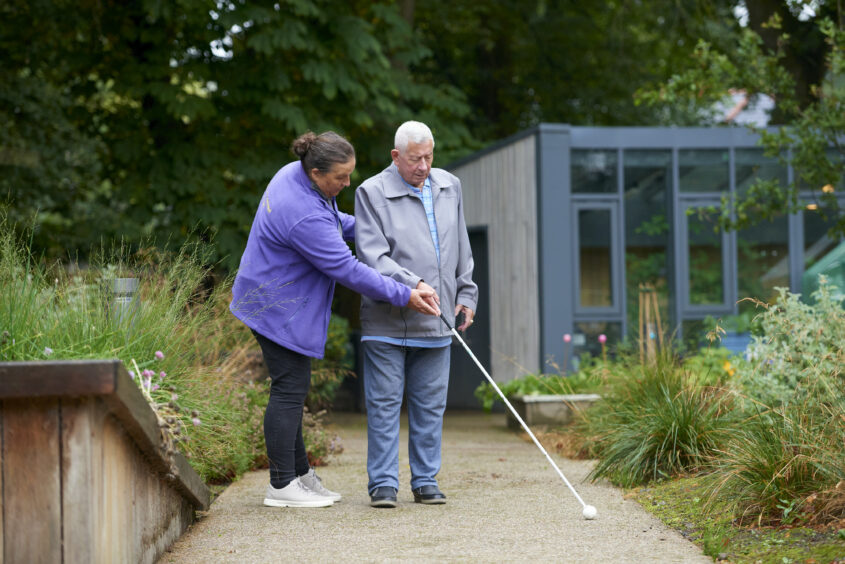
After suffering a brain haemorrhage, former Army chef Steven Waterston faced a life-or-death decision.
He could undergo potentially life-saving brain surgery but there was no guarantee he would even survive and, if he did, risked sight loss, or severe disability.
-
Some Sunday Post online content is funded by outside parties. The revenue from this helps to sustain our independent news gathering. You will always know if you are reading paid-for material as it will be clearly labelled as “Partnership” on the site and on social media channels,
This can take two different forms.
“Presented by”
This means the content has been paid for and produced by the named advertiser.
“In partnership with”
This means the content has been paid for and approved by the named advertiser but written and edited by our own commercial content team.
The veteran from Edinburgh bravely chose to go ahead with the operation to repair what he called the “partly exploding bomb in my head”, and was left with blindness in his left eye and partial sight in his right.
But he was soon back doing what he loved most – marathon running, having completed at least one marathon every year for two decades.
“I was always going to run”
“It never crossed my mind that I wouldn’t be able to run again,” he admitted. “I was always going to run.”
Waterston had overcome a first brain haemorrhage in 2003, before a second bleed in 2008 led to the tough decision to undergo the high-risk surgery. Neurological damage meant he had to re-learn skills which previously he’d taken for granted.
He attended a neuro rehabilitation centre in Edinburgh as well as Headley Court, the MoD’s medical centre in Surrey. He was discharged in April 2010, two days before the London Marathon.
It was an emotional day for Waterston who had been forced to withdraw from the race the previous year due to his recovery.
He recalled: “That was my first visually impaired London Marathon and I did it in fancy dress as The Mad Army Chef, my alter ego, with a cane!”
Fundraising for charity
The fundraising adventures continued over the next few years, including a bungee jump, a sky dive, and the San Francisco Marathon. But there have been challenges to overcome.
He said: “I am 14 years into my sight loss journey now but at the beginning it was a very uncertain time because I had a wife, a young daughter and a mortgage. I was in quite a dark place and it was difficult handing back my Army ID card and driving licence. I had no job, no sight, no driving licence and no clue about the future.”
However, Waterston received amazing support from wife Lynn and daughter Laura, 23, while he also now has a baby grand-daughter, Isla.
After being discharged from the Army he retrained as a sports therapist and is now self-employed, while he is also a member of Sight Scotland Veterans, a sight loss charity that provides vital support for former Armed Forces personnel.
Help from Sight Scotland Veterans
Waterston was first put in touch with the veterans’ charity in 2009, when it was still known as Scottish War Blinded.
He recalled: “When I got home from hospital, after surgery, I was assigned a stroke nurse and she mentioned Scottish War Blinded to me. I attended their Linburn Centre.
“There I met my support worker and she was really helpful. They sorted me out and answered my questions about sight loss – they’ve been great. They also offered signposting to other services and supported me throughout my pension appeal on leaving the Army. I also was put in touch with a RNIB solicitor when I needed one.
“Sometimes I have no choice, I have to accept it for what it is. I know I cannot drive with my sight loss but the public transport system is very good where we live. Sight Scotland Veterans organise lots of activities, including shooting, archery, flying gliders and driving tanks, as well as day trips outside the centre. I even did some off-road driving in a Land Rover with the police at Tulliallan.
“You might think your situation is bad but there is always someone who is worse off, as the saying goes. At the centres, guys share their stories and how they have managed which gives you strength and confidence to know you are not alone and things can be achieved.”
Waterston is now back training for next month’s London Marathon – look out for him wearing a Muttley costume in aid of a guide dogs’ charity.
For more about how Sight Scotland Veterans helps people, read Tony Mulheron’s inspiring story.
What can Sight Scotland Veterans do for you?
Sight Scotland Veterans, renamed from Scottish War Blinded in 2020, is a sight loss charity which supports people who have served in the Armed Forces.
Here are just some of the ways in which the charity helps veterans:
- Installing equipment: get a new phone, scanner or special reading tools
- Supplying walking or safety aids: from long canes to adapted kettles, your home will work better for you
- Giving people independence: the charity trains people with sight loss to walk with a cane
- Expanding social circles: meet like-minded people at one of Sight Scotland Veterans’ centres
- Teaching new skills: learn to paint, draw, cook, shoot or work out at the centre, or boost your IT skills
- Getting back into sport: build your strength in a staffed gym l Providing emotional support: talk to any of the skilled centre staff or build a new friendship with a fellow veteran
How would you adapt if you lost your sight? Find out more here in this article.
If you, or someone you know, served in the Armed Forces and has partial or full sight loss (no matter how or when it happened) and could benefit from Sight Scotland Veterans, visit sightscotlandveterans.org.uk

Enjoy the convenience of having The Sunday Post delivered as a digital ePaper straight to your smartphone, tablet or computer.
Subscribe for only £5.49 a month and enjoy all the benefits of the printed paper as a digital replica.
Subscribe © Supplied
© Supplied © Supplied
© Supplied © MAVERICK PHOTO AGENCY
© MAVERICK PHOTO AGENCY